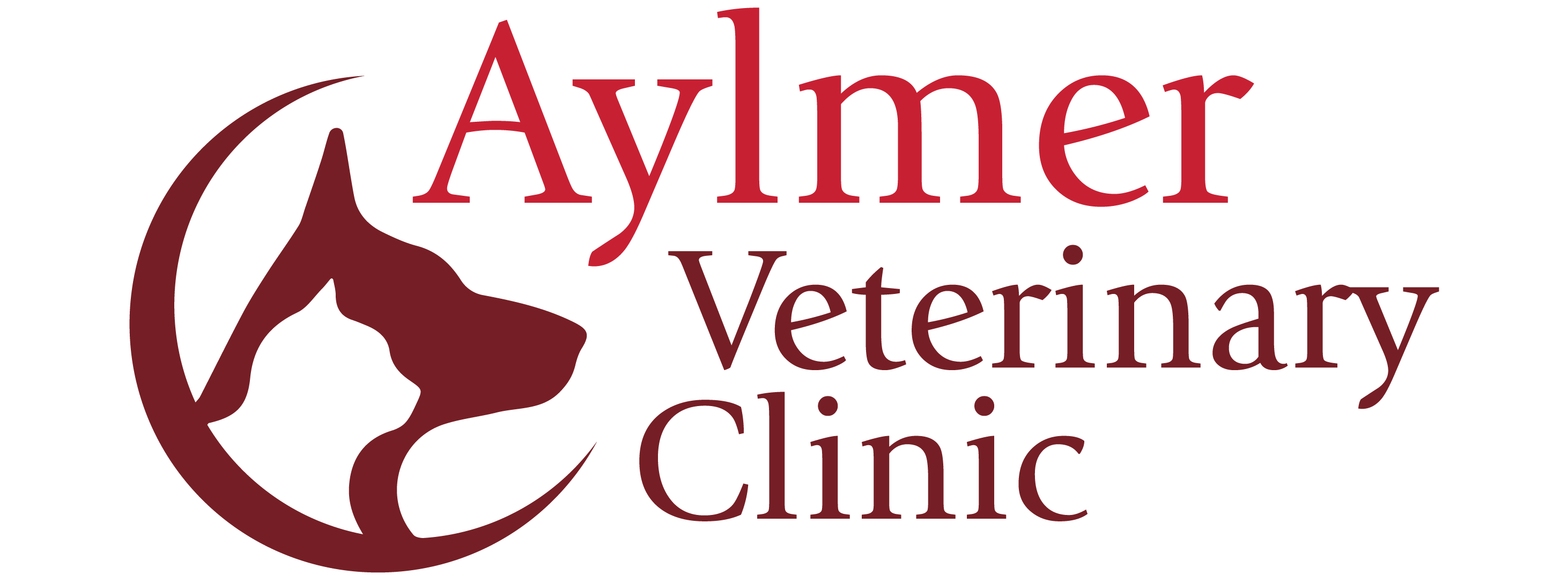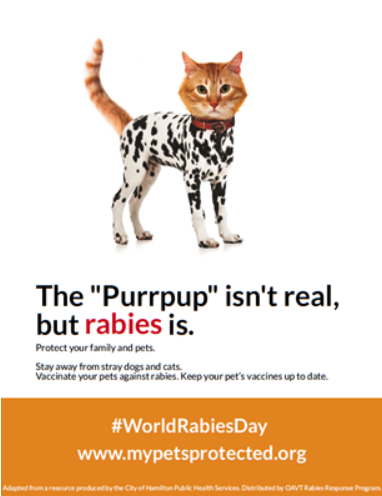World Rabies Day is approaching on September 28th, and I wanted to touch on the importance of vaccinating your pets. We are experiencing a resurgence of rabies cases in Ontario. For ten years, the raccoon rabies strain was not seen in Ontario, and there was only the odd bat that tested positive for rabies. Then in December of 2015, the raccoon rabies strain was reported in Hamilton, ON. Since then, there have been over 400 cases reported.
In Ontario, pet owners are legally obligated to vaccinate all of their animals against rabies according to the Health Protection and Promotion Act, Regulation 567. This includes dogs, cats and ferrets that are 12 weeks of age or older. The rabies vaccine also needs to be boostered every year or every three years, according to manufacturers guidelines.
Rabies is a fatal disease and is zoonotic, so transmissible to people. There is no cure for rabies once symptoms are observed. The symptoms of rabies are:
- Trouble walking or standing
- Weakness
- Paralysis
- Seizures
- Difficulty breathing
- Difficulty eating/drinking/swallowing
- Excessive salivation
- Change in vocalizations
- Behaviour changes (aggressive, quiet/depressed, unusually friendly)
- Self-mutilation
If you come across an animal that you suspect has rabies, you should report it. Who you call depends on who has been exposed to the potentially rabid animal. If there is potential human contact, you should call our local public health unit. If there is potential domestic animal contact, you should contact your local veterinarian, who will then call the Ontario Ministry of Agriculture, Food and Rural Affairs. If you suspect a wild animal to be rabid, that is not a bat; then you call the Ontario Ministry of Natural Resources and Forestry hotline at 1-888-574-6656. If there is a sick or dead bat with no human or animal contact, then you can call the Canadian Wildlife Health Co-Operative at 1-866-673-4781. The animals that are most often associated with transmitting rabies are bats, skunks, raccoons and foxes. The most common form of transmission is through a bite or scratch from a rabid animal. Rabies can be spread when infected saliva or nerve tissue comes in contact with an open wound or is introduced into a mucous membrane like the eyes, nose or mouth.
The Ontario government, specifically the Ministry of Natural Resources has distributed rabies vaccine bait to wildlife populations in areas where there have been rabies cases reported. Rabies is a preventable disease if you keep your animal’s vaccines up-to-date.
Written by Jacqui Davis, RVT




